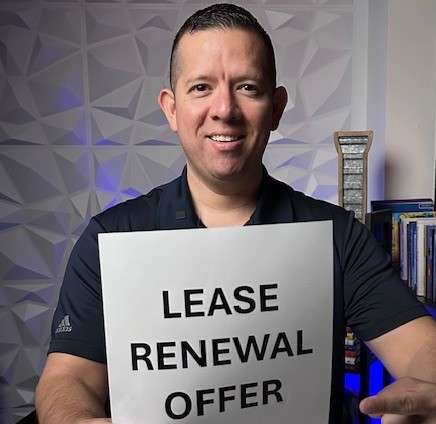Mayday… mayday… your lease is coming up for renewal! You have a resident that has been paying you rent but their lease is coming up for renewal, what to do? Do you raise the rent to maximize the value of your investment? If so, how much and how to best proceed? Do you keep it the same as to not to disturb the residents? And what does the property even look like? Have the residents been taking care of your investment? Phase Three of the Resident Life Cycle is all about renewing the lease. The key to going about this process as best as possible is to have a plan in place well before the lease expiration date. Here’s the process we follow.
DECIDE
- Sellor Move In: If it is time to sell the property or if you’ve decided to move back in, then this is the ideal checkpoint to update the resident and ask for possession back at the end of the lease. Assuming the property is not subject to the Tenant Protection Act then the formal process of asking for possession back of the property needs to be followed. In our area, the formal notice is called Notice of Termination of Tenancy, and this notice needs to be formally posted.
- Continue to Rent: If the decision is still to rent out the property, then the decision must be made if the lease will be renewed or if you’ll decide to let it go Month-to-Month. When it comes to operating a property as a rental is it best practices to renew the lease rather than having it go month to month as this creates a natural checkpoint to perform a walk-through to assess the condition of the property, it’s a checkpoint to address the rental price to see if a rent increase is reasonable and it provides stability for both the owner and residents as the owner can count on a stable income stream and the residents have secured stable housing. If a lease is desired then the following steps can be followed.
STEPS
- STEP ONE: TIMEFRAME
We initiate this process 90 days prior to the expiration of the lease. This provides ample time to gothrough the process without having to rush and gives the residents enough time to decide.
- STEP TWO: RENTAL ANALYSIS
A property manager can help prepare a Rental Analysiswhich will provide a list of properties that are comparable and see if the rental rates have increased. Most of the time rents do go up with inflation and its best practices to increase rents to keep up with the market.
- STEP THREE: SCHEDULE A WALK-THROUGH
This is the time to do a formal walk-through of the property. In addition to assessing the condition and if the property has been well taken care of, it is also an opportunity to talk to the resident and get an idea of what their plans may be. Sometimes residents will already know that their circumstances have changed and have been waiting to share that they will be moving out. Other times, they share that they are happy with the home and have no intent on moving out anytime soon. In either case, being able to get this feedback is helpful prior to providing the Lease Renewal Offer. If a resident has not been taking good care of the rental home, then it’s in an owner’s best interest to terminate the lease. This can be done after the walk-through by providing a Notice of Termination of Tenancy.
- STEP FOUR: PROVIDE AN OFFER
After the walk-through has been completed then a formal Lease Renewal Offer will be provided to the resident with the following options…
- Option 1, Renew with an Increase: This option is to renew the lease with an increase. The exact rental rate to offer can be more of an art then a science as several factors need to be considered such as the current rental rates based on the Rental Analysis, an owner’s risk tolerance for asking to high of a number and having a resident possibly move out, how well the resident has been doing in taking care of the property and the length of time the resident has been renting the home.
- Option 2, Go Month-to-Month at a Premium: Ideally, a resident will know their plans which are either to stay and therefore sign a new lease or move out. However, life isn’t always black and white. Sometimes life events (a possible job promotion and therefore relocating, a new baby where more space is needed, downsizing, etc.) can cause a resident’s household to be uncertain if they will be staying of if they will be moving out. As a resident, having this option is crucial as it provides them the flexibility of time. However, this option possesses more risk to an owner as the future of the income stream is unknown and therefore this option must be provided at a premium. Though there’s no set price as to what the premium should be, a good rule of thumb is to price this at 10% above the current rental price.
- Option 3, Move Out: If a resident is not looking to stay, regardless of the reason, then this is the logical checkpoint to ask them if they are looking to move out and if so then to start walking them through what that move out process will look like. A resident is required to provide a minimum of a 30-Day Notice which is ample time for an owner to plan to be able to go through both the leasing and The Turn Process.
- STEP FIVE: EXECUTE
Once the offer is provided, a resident needs to be given some time to review their options and decide. Though not common, it’s normal to get push back with Option 1 as the increase may or may not be in line with the household’s budget. A decision must be made as to whether to negotiate the rental rate being offered. If a resident is ready to proceed then the Lease Renewal must be prepared and signed. Under Option 2, the form Notice of Change of Terms of Tenancy must be prepared for the premium to be able to take effect.
CONCLUSION
The above process will make sure that the property is being looked after in addition to being able to stay up with rents overtime.



